

When designer JJ Martin began her search for a new home following a divorce, she spoke to estate brokers, visited spaces recommended by friends, and went through all the routine steps. But after she didn’t see anything that appealed to her, the La DoubleJ designer took matters into her own hands. “I decided to go walk down one of my favorite streets in Milan and I just started interviewing all the doormen,” Martin tells GRAZIA USA about her apartment hunt in the Italian city she’s called home for 21 years. “Doormen in Milan have all the secret insider information.”
Martin was told again and again there were no available apartments — until she got to the last building. “The doorman said, ‘No, I don’t have anything. But I just heard about this amazing place on one of the most beautiful streets in Milan. It’s not far from here. Run over and go check it out.’”
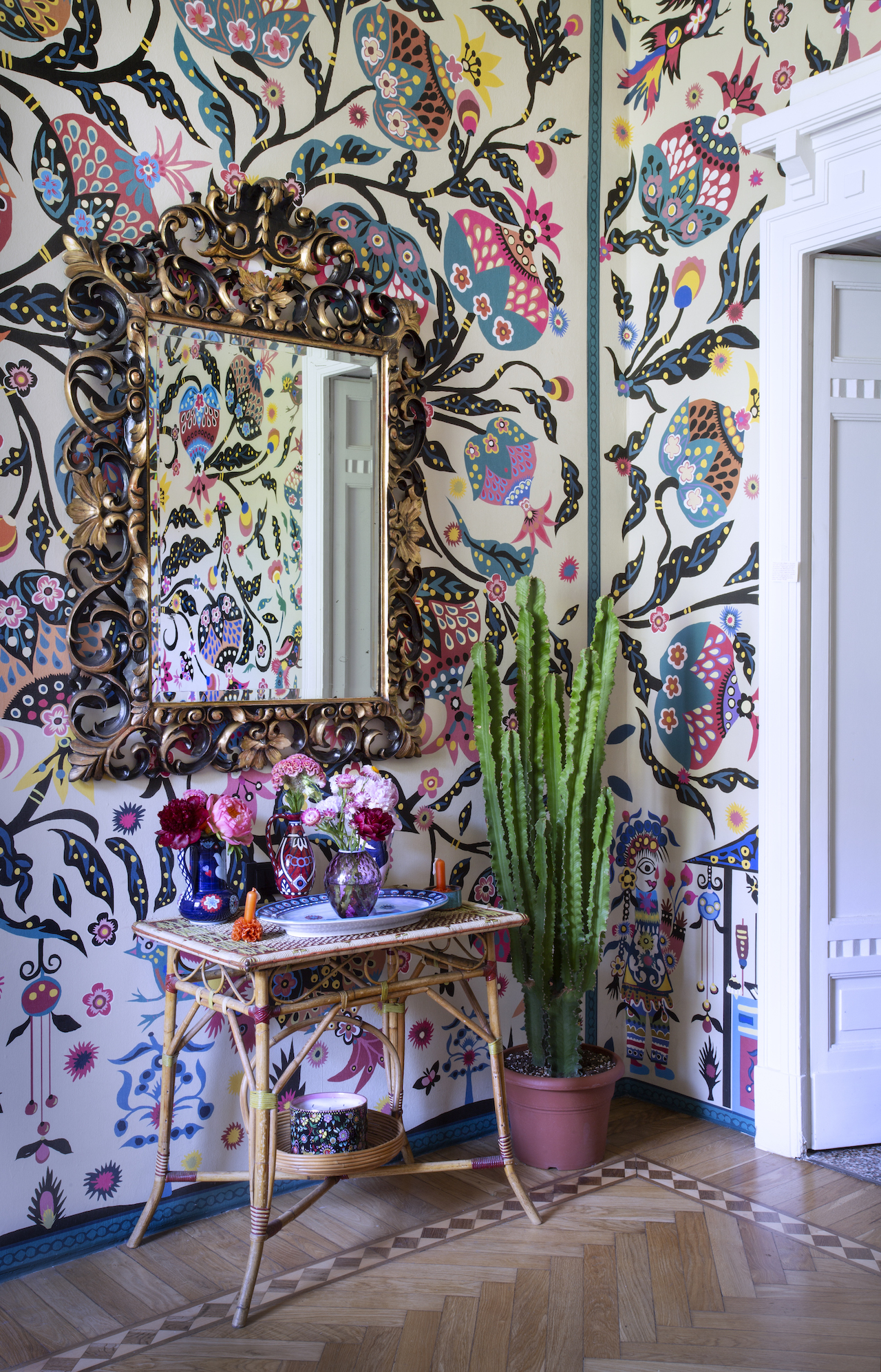
When Martin walked into the space, “every wall was white and there wasn’t a single lamp or lighting fixture, not a sink in the entire house,” she recalls. In fact, she adds, there weren’t even closets or a kitchen. Nevertheless, she knew she had found the one.
“What really attracted me to it was the beautiful light and the beautiful bones of the house,” she says of the space built in 1910. “There was all of this gorgeous molding on the ceilings and around the doorways, and then the floors were beautiful terrazzo marble, as well as parquet with wooden strips that look almost like herring bone, which is very typical in old homes.”
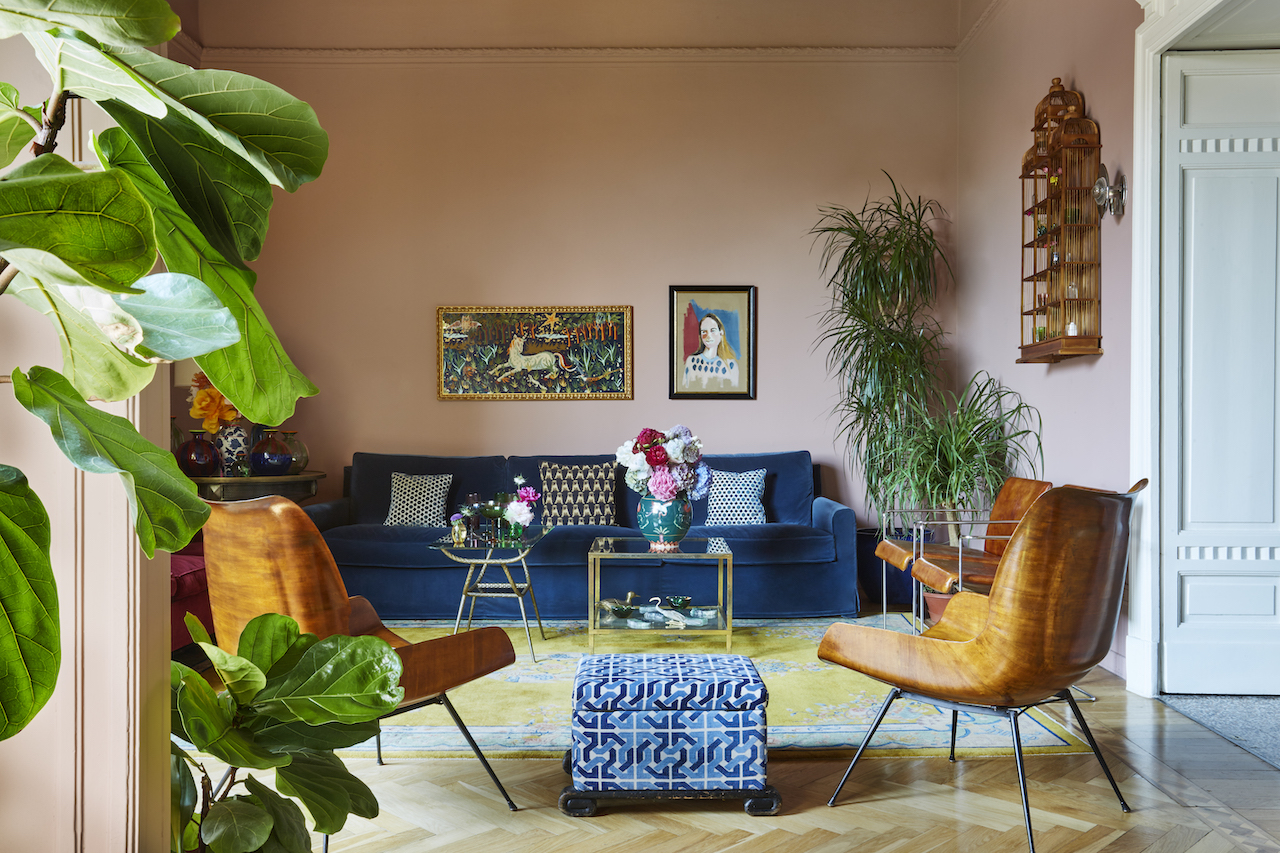
One week after moving into the three- bedroom apartment, COVID-19 hit. The government put strict lockdowns into place in Milan, and for three months, Martin was stuck living with nothing but a mattress on the floor, one couch and two lamps. “That was very challenging,” she notes. Martin had to learn to have patience when stores closed and workmen couldn’t enter her home. “I’m the kind of person who likes to always stay busy. I do one thing, then I want to do the next, and the next,” she says. “I really had to learn how to just cool my jets and just do one little thing and then wait. And then do one little thing and then wait. But it gave me a lot of time to just sink into the space and feel it out. But it was frustrating, let me tell you.”
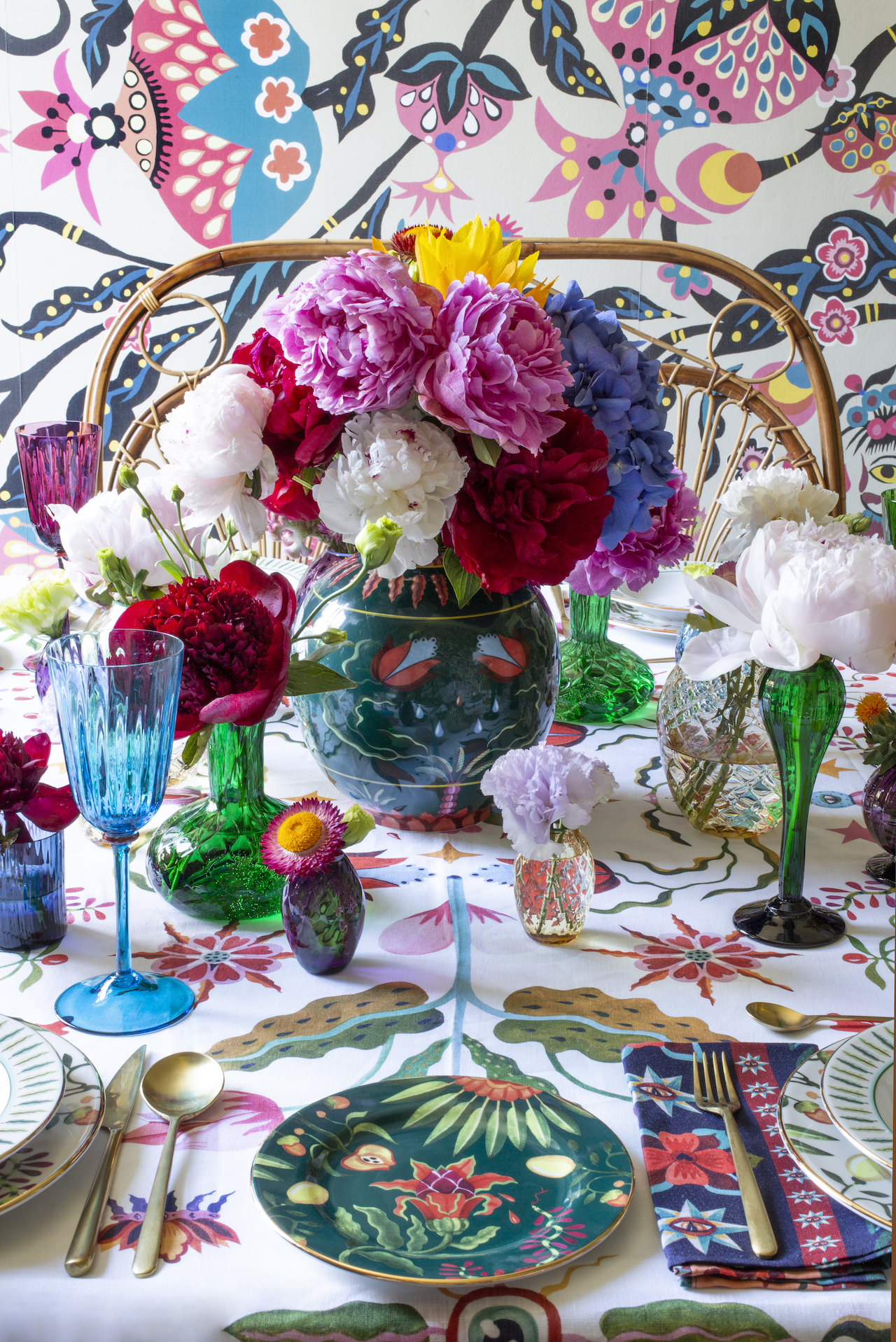
She began “planting seeds” by researching furniture and décor pieces online, reaching out to artists, like print designer Kirsten Synge, who created wallpaper in the dining room based off collages Martin found in Bali. Martin also took the time to sort through her belongings, which turned into inventive décor inspiration. “I was going through boxes and when I laid out all of my vintage jewelry on the floor, I was like, ‘Oh, this looks so good on the floor. I wonder if I should just put that on the wall?’” Those necklaces now hang in the bathroom. “A lot of ideas were incubating during COVID and then slowly but surely, everything just kind of piled up and started swirling,” she says.

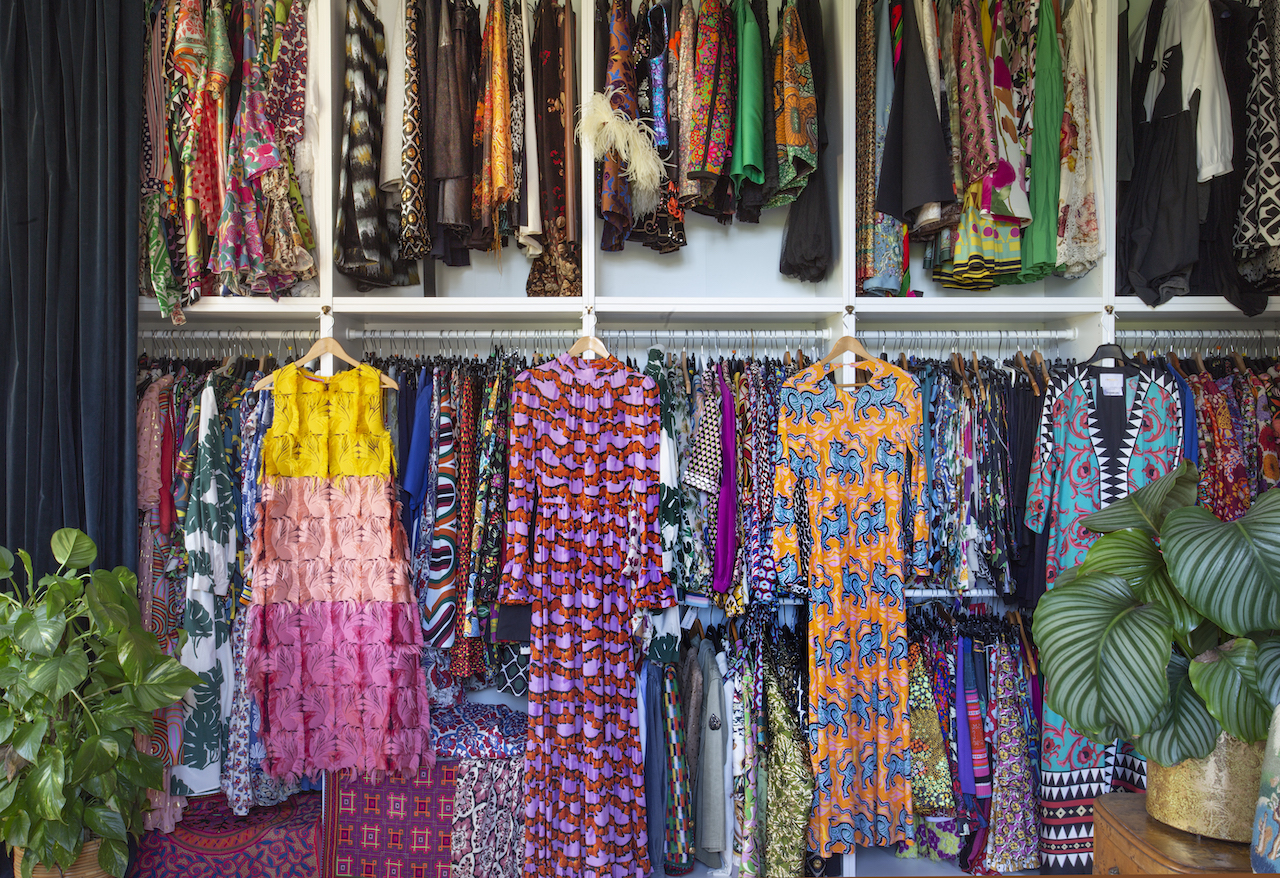
For Martin, piecing together the perfect combination of elements in a room is all about following her gut instinct. “I totally experiment,” she says. “I’m not very methodical or organized, and so usually I don’t have the whole thing thought out from start to finish. I always just start with one object — that could be the wallpaper or the couch or the carpet — and then I think, ‘What would accompany that?’ Then when those two are together, I think, ‘OK, what would accompany that?’ It’s really this building block that is based on intuition and there’s a lot of trial and error.”
She’s already changed elements of the home that didn’t quite speak to her, including the muted celery color of her bedroom walls, which are now an oxblood red. “Literally the minute the green went up, I just felt the pang in my stomach. I was like, ‘This is not right. I hate this celery color.’ I walked into the bedroom, and I felt wimpy. There was no energy coming off the walls.” The new and improved oxblood red, she notes, is “like living in a dark, raw cave and I love it. It feels so juicy.”
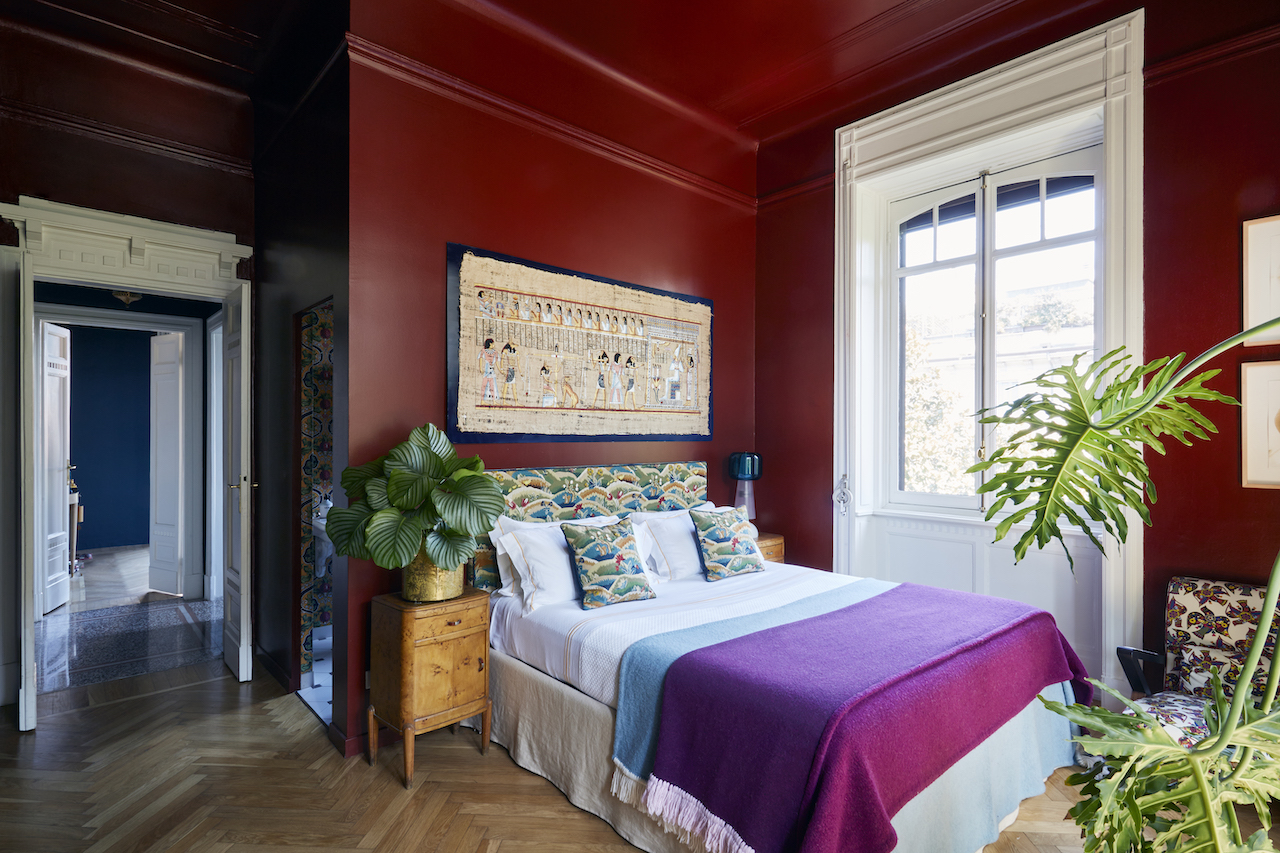
Part of trusting her instincts comes from understanding the energy colors emit. “I’ve always been attracted to color, patterns, prints and embellishments my whole life, but it wasn’t really until I started my spiritual practice and learned about energy [that I] understood that color holds frequency,” Martin explains. “Different colors are vibrating at different energetics, and you can really draw energy from color. That’s kind of the same approach and outlook that I take with the company. We’re not just doing patterns and prints randomly, it’s really because they create the dialogue within you and within other people.”
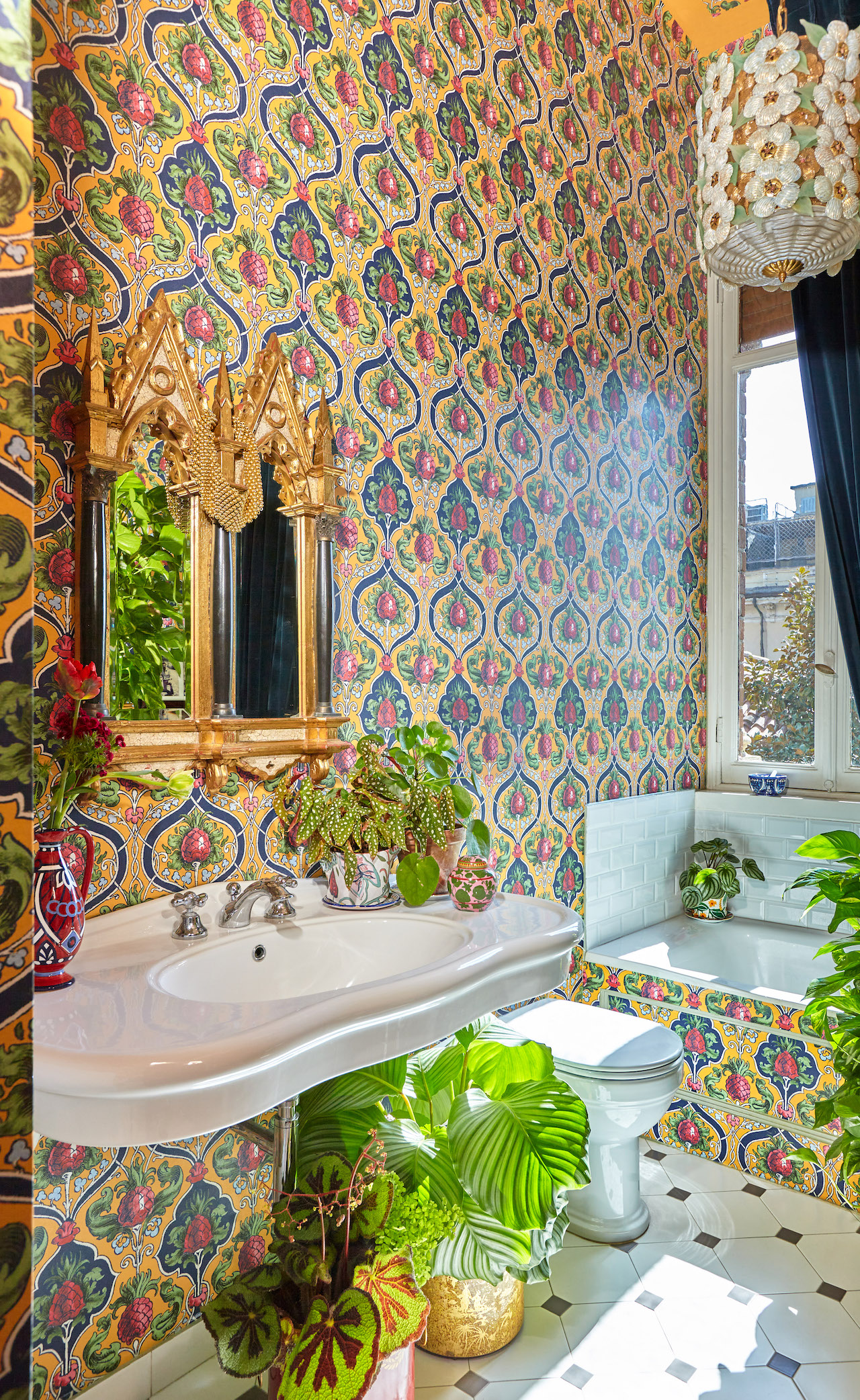
Martin’s space is now filled with the kind of delightfully bright hues and pops of prints that she designs for La DoubleJ’s assortment of clothing, accessories and décor. It was important for Martin to have color and pattern that “spoke” to her and felt “very harmonious and balanced and organized.” Because her thoughts can be scattered, she says, “I like to have my environment very organized, and the furniture needs to live together and sit together in a way that brings me peace. I just find apartments that have all white walls and very little decor a little bit heartless and soulless.”
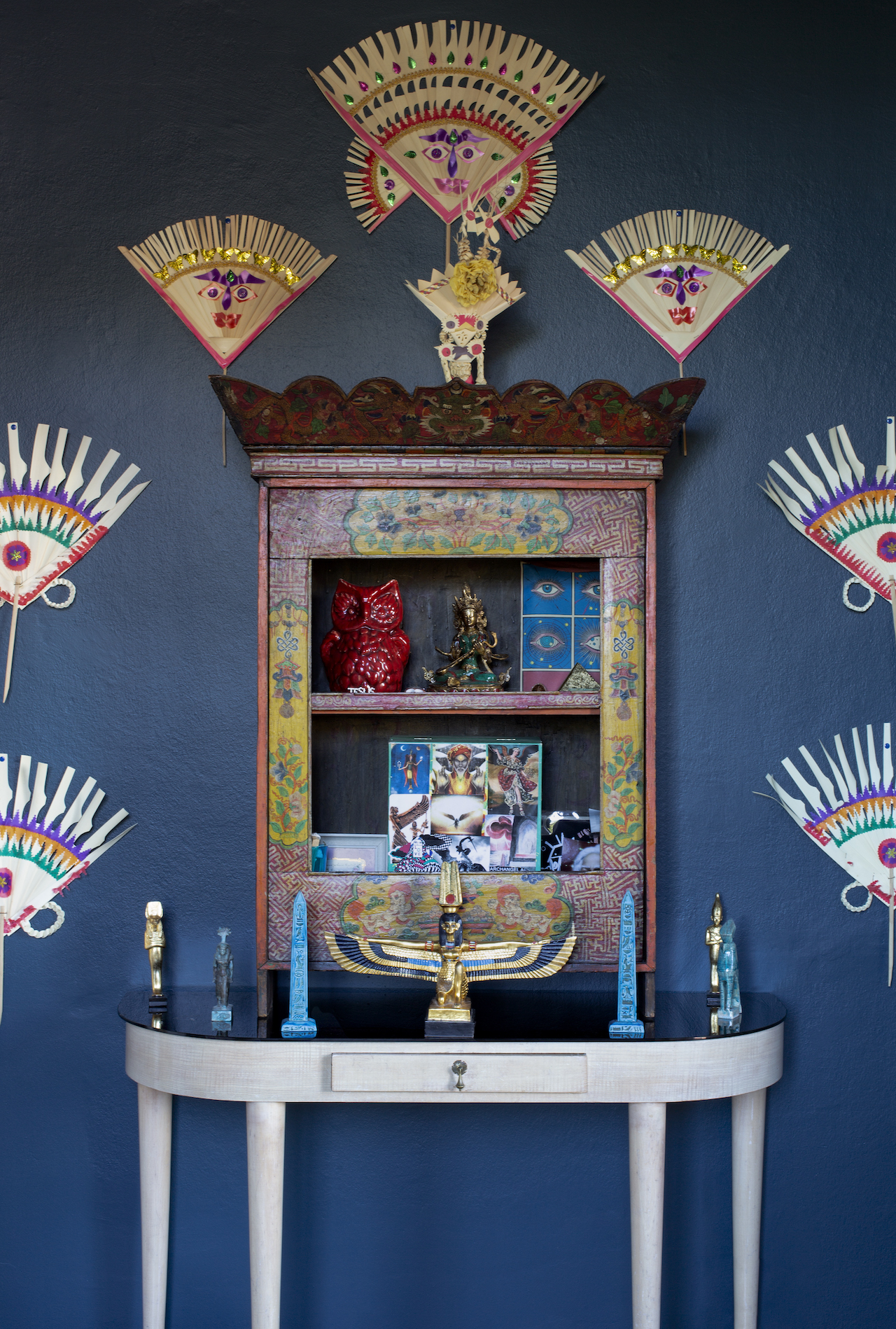
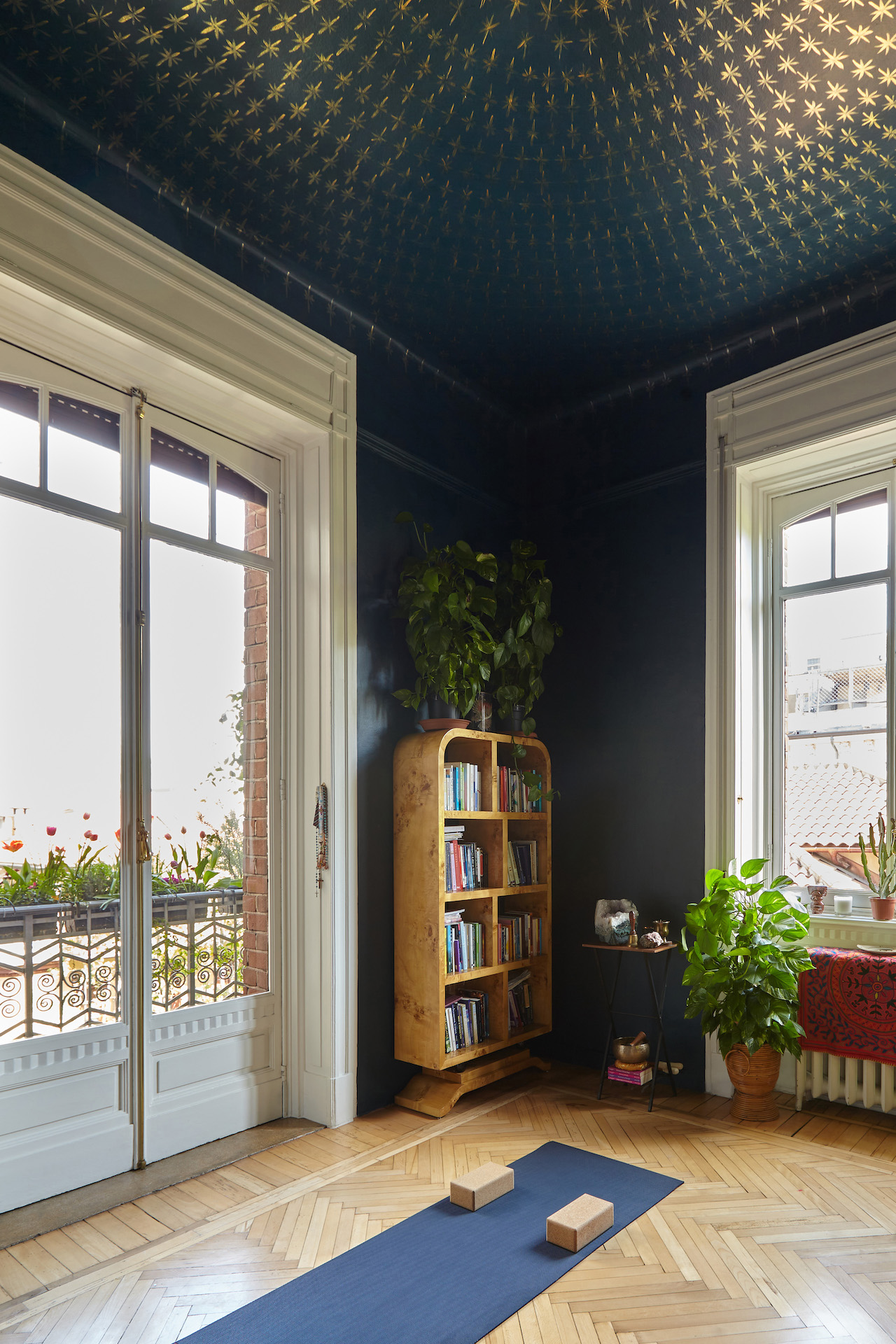
As she transformed the space into her home, one room became a dedicated meditation sanctuary that houses a yoga mat and a bookshelf as well as a Tibetan altar filled with spiritual memorabilia, statues of gods and goddesses, pictures of her parents, and other symbolic pieces. The altar rests on a 1950s Italian console table, and Balinese spiritual fans adorn the surrounding wall. Another special touch in the designer’s favorite room is the hand- painted ceiling featuring a gold mosaic inspired by a Byzantine church she once visited in Ravenna. Martin showed her friend, painter Jay Lohmann, a photograph and he snuck over and recreated the mosaic on her ceiling during the COVID lockdown.

From armchairs covered in Holliday & Brown prints reissued by Prada in the early 2000s, to Molteni tables used at La DoubleJ’s office, Martin points out that most of the furniture in her home is Italian, vintage and “almost everything has a weird story about like how I got it.” For instance, a Milanese antique dealer, Raimondo Garau, helped Martin find her 1990s Poliform kitchen that was saved when its previous owner was about to throw it out. Garau also sourced sconces from 1910, the year her building was built. “It’s very cool to have something very Milanaise from the same decade to put into the house,” Martin says.
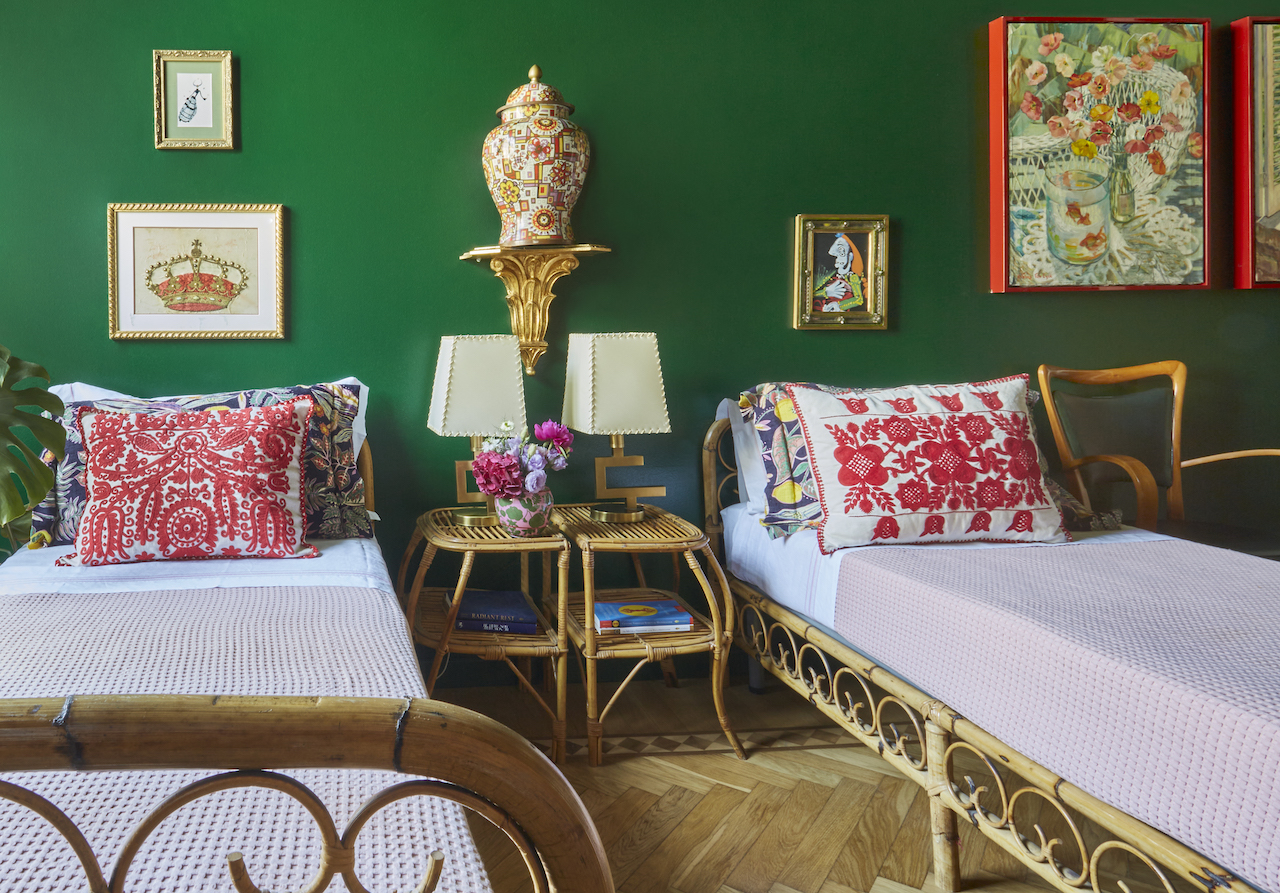
The designer’s gift of creating a space that blooms with color and reverberates with energy but still maintains a sense of comfort and serenity is unique — and one that isn’t easily replicated. “It’s just purely feeling based,” she says of her approach. “There are no rules. Once I feel that sense of freedom and that sense of relief when I walk into a room, then I know that the room is complete and that things have been arranged in a way that feels most aligned for my own energy.”
While creating her version of the perfect atmosphere in her apartment may have been a process filled with fits and starts, Martin has finally settled into her own special vision of home sweet home.
Read GRAZIA USA’s Spring issue featuring cover star Lucy Boynton:













